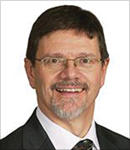This is the second in a series of five articles focusing on each of the five pillars of EPRI's Telecommunications Initiative, which is studying the impacts of a changing telecoms environment in the utility space.
The energy industry recognizes the need to improve the performance, reliability, and security of utility communication systems used for distribution automation, telemetry, and control. Currently there is no one architecture or technology solution that meets the needs of the industry, or even the entire operating area of a single utility. The diversity of proprietary and standard technologies—and the complex and fast-moving pace of new technologies, particularly in wireless communications—compound the difficulty in identifying an optimal architecture.
In response to these challenges, the Electric Power Research Institute (EPRI) is developing a utility telecom wireless taxonomy as part of its Telecommunication Initiative. This taxonomy will guide utilities in framing telecommunication needs, help them understand the technology options, and inform the process of identifying architectures and systems that meet both current and future needs.
Taxonomy is the practice and science of classification of things or concepts. Taxonomy helps people make sense of the things around them.
EPRI will work collaboratively with electric utilities and the telecommunications industry to focus on defining and characterizing the needs and requirements of an evolving electric grid and develop an approach to specify architectures and technologies. EPRI’s researchers have identified logical tiers of classification based on the requirements of different utility applications and the natural, functional boundaries of current and emerging technologies. The process may also identify where there is a “gap” or mismatch between the capabilities of available technologies and the requirements of applications.EPRI is exploring these boundaries in the areas of utility networks and centralized generation, substations and distribution systems, distributed generation, and technologies at the edge of the grid, such as advanced metering infrastructure (AMI) and metering technology. Achieving interoperability with different classes of systems and technologies and properly defining and classifying them is the primary part of this research mission.
The Quest for the Telecommunications Holy Grail
The Holy Grail for buyers of communication systems is interoperability: the ability to pair equipment from vendor A with equipment from vendors B, R, Q, and Z and know that they will work the first time, every time. Unfortunately, many vendors seek to “lock in” customers with equal fervor. For the utility, being locked-in to a vendor’s platform limits flexibility and system expansion and eventually leads to costly wholesale replacement of systems to implement new technologies. Because of this issue, the taxonomy is being built primarily around standards-based technologies. The use of standards-based technology has many benefits including multi-vendor sourcing, multi-vendor interoperability, backwards compatibility, extensibility, and easy migration to future technologies. Where standards-based technologies are not yet available, EPRI’s researchers will develop ways to support interoperability through industry alliance-based testing and certification.
Defining the Universe
In general, available wireless communications technologies break down into a few broad categories, with differentiation between those categories being a matter of the wireless spectrum used, whether the spectrum is licensed or unlicensed, and whether any licensed spectrum is owned or shared with other uses. Each of these factors leads to tradeoffs in range, bandwidth (how much data can be communicated), latency (the time lag between transmission and reception between two points on the network), or other factors affecting their use in a utility environment.
- Mesh systems, in which each communicating device on the network also serves as a repeater and range extender, are easy to deploy, low-cost, and flexible, but they can have higher latency than point-to-multipoint technologies depending on the number of “hops” between points. Mesh networks for AMI have relatively low data rates, but some types of mesh networks based on Wi-Fi can provide rates high enough for video.
- Point to Multi Point (PMPT) systems have better throughput for enabled links, but they are complex to manage and difficult to scale.
- Systems using higher frequency bands have more limited range per hop, but they can provide very good bandwidth and often have less interference.
- Commercial LTE-based systems have the advantage of mature technology and broad availability, but they have the disadvantage of requiring subscriber or sharing arrangements or operating as an overlay on other networks, each of which makes managing the quality of the utility’s network connections difficult. Private LTE systems are desirable, but the options for accessing suitable spectrum are limited and can be costly.
Because of these tradeoffs, there is no clear winner for all utility systems, or even for any one utility. Often, the ideal architecture incorporates multiple technologies, taking advantage of the strengths of each, and applying each technology where it is most advantageous.
Coming Attractions
EPRI’s taxonomy report will be distributed to participating utilities in the summer of 2017, although preliminary results are being shared now with utilities participating in the research collaboration. In the next phase of the research, the team will develop a planning framework, which will be released in early 2018. However, the need for research in the evolving world of wireless communications never truly ends. EPRI’s ongoing research into communications technologies will build upon the reports currently being developed and provide a continuing source of updated, relevant information for the utility industry. Taxonomy is the first step. To learn more contact the authors.
About the Authors
 Tim Godfrey is a Technical Executive with the Electric Power Research Institute, specializing in Telecommunications. He manages the Telecom Initiative, a research project addressing the key challenges utilities face related to the telecommunications infrastructure supporting the smart grid. He holds a BSEE from the University of Kansas and has worked in the area of wireless networking and communications for 20 years. He has 23 granted patents. Mr. Godfrey has participated in IEEE standards development since 1994. He is the Chair of the IEEE 802.24 Smart Grid Technical Advisory Group, and the IEEE 802.16 GRIDMAN Task Group.
Tim Godfrey is a Technical Executive with the Electric Power Research Institute, specializing in Telecommunications. He manages the Telecom Initiative, a research project addressing the key challenges utilities face related to the telecommunications infrastructure supporting the smart grid. He holds a BSEE from the University of Kansas and has worked in the area of wireless networking and communications for 20 years. He has 23 granted patents. Mr. Godfrey has participated in IEEE standards development since 1994. He is the Chair of the IEEE 802.24 Smart Grid Technical Advisory Group, and the IEEE 802.16 GRIDMAN Task Group.
 Chris Kotting is a technical advisor for ICT and Cyber Security at the Electric Power Research Institute. He was previously engaged as a consultant and author on the development of communication standards for the electric industry, working with SGIP, NAESB, and other industry alliances. Earlier in his career he was on staff at the Public Utilities Commission of Ohio, working in numerous policy and regulatory roles, in both the energy and telecommunications industries. He has a BA in Communications from The Ohio State University.
Chris Kotting is a technical advisor for ICT and Cyber Security at the Electric Power Research Institute. He was previously engaged as a consultant and author on the development of communication standards for the electric industry, working with SGIP, NAESB, and other industry alliances. Earlier in his career he was on staff at the Public Utilities Commission of Ohio, working in numerous policy and regulatory roles, in both the energy and telecommunications industries. He has a BA in Communications from The Ohio State University.








